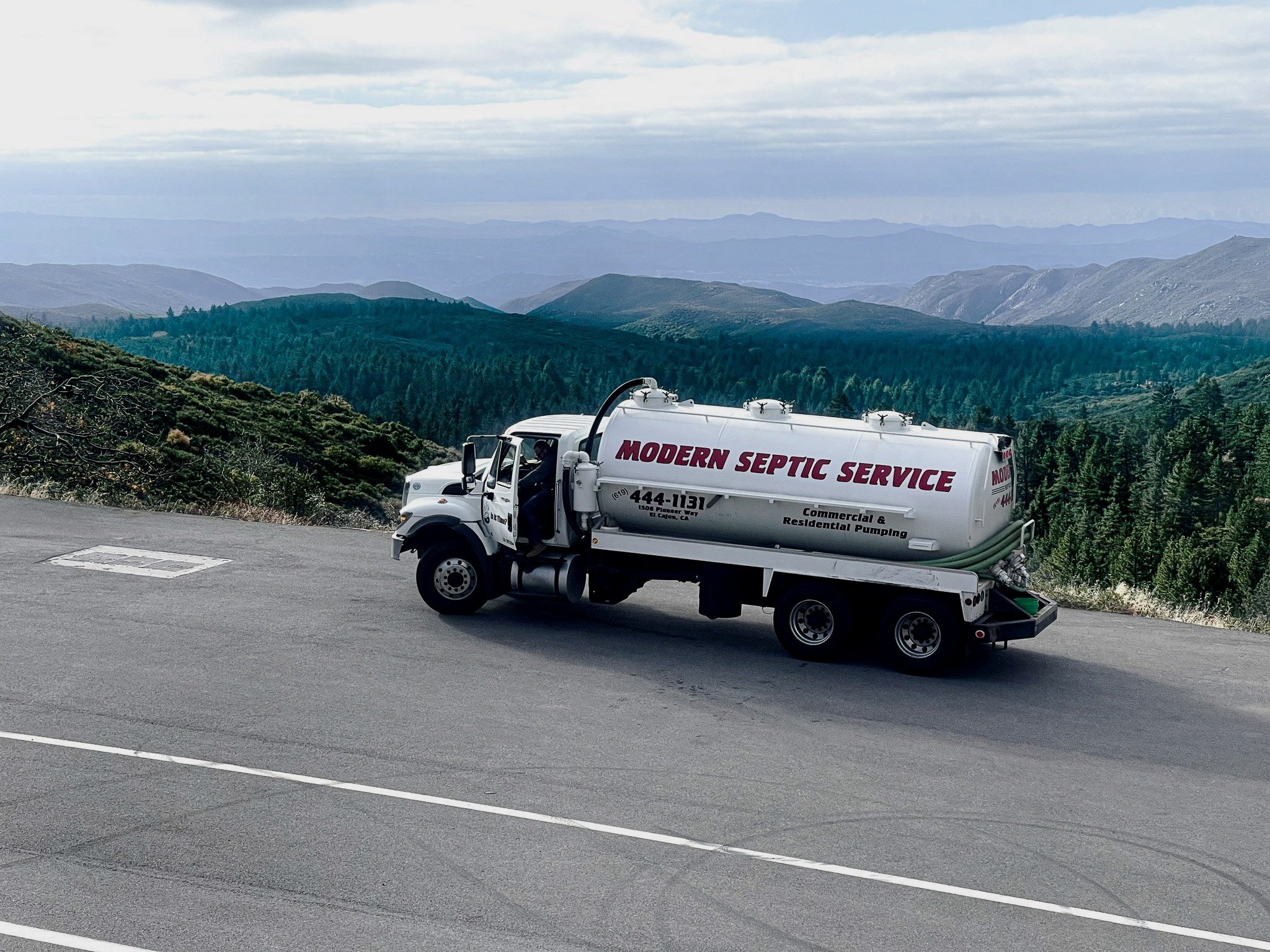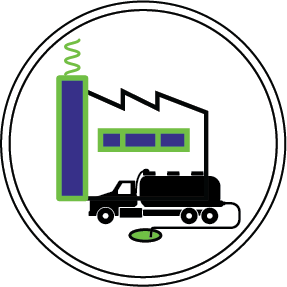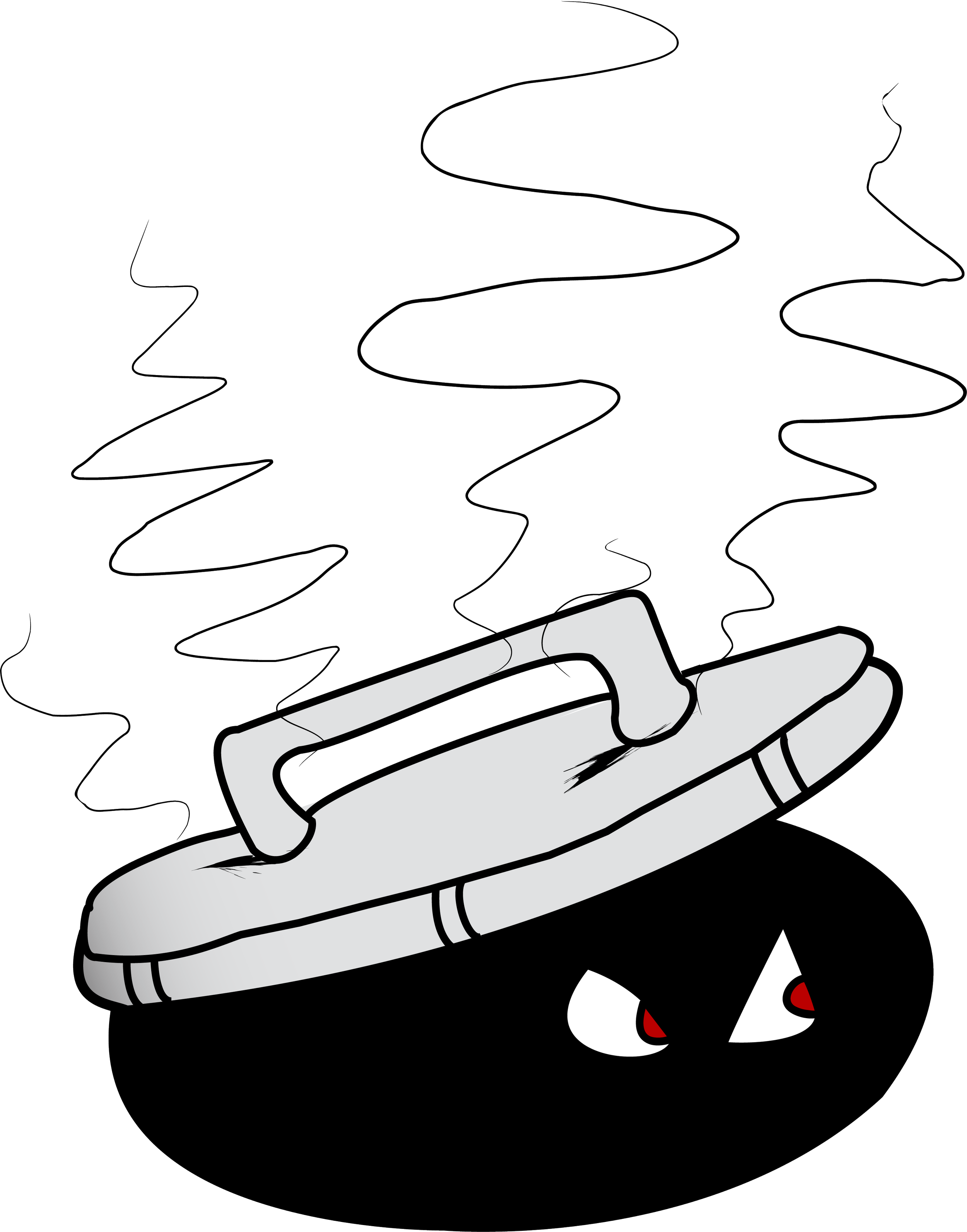
TERMS OF SERVICE
Residential Pumping
& Septic Services
Commercial Pumping
& Septic Services
Municipal & Industrial
Septic Services
Recreation Industry
Septic Services
At Modern Septic Service, our Terms of Service are designed to ensure a transparent, efficient, and high-quality experience for every customer. By agreeing to our services, clients agree to our policies regarding scheduling, pricing, payment terms, warranties, and service limitations. We prioritize safety, compliance with local regulations, and clear communication throughout each project. Acceptance of any service—whether verbal, written, or via online booking—constitutes full agreement to our Terms of Service, regardless of circumstances. Our team is committed to providing reliable septic solutions, and our terms help define expectations so both parties are aligned from start to finish.
During the period of service, unless otherwise explicitly agreed in writing, Modern Septic Service shall not be held liable for any damage to underground utilities, including but not limited to water lines, electrical wiring, gas lines, irrigation systems, drainage pipes, communication cables, or power conduits. Modern Septic Services operates vehicles that weigh up to 54,000 pounds and measure approximately 13 feet in height, 8 feet in width, and 35 feet in length. These large vehicles may potentially cause damage. Modern Septic Service shall not be held liable for any damage to on site instalations
NOTICE ON DAMAGE
All Services & Materials are specified in our service. Any alteration to time, material, or deviation from outlined services involving extra cost will be executed under written notice and will incur an extra charge to the customer. Any delays to our services beyond our control will be charged at $150 per hour labor cost to the customer
ESTIMATE ALTERATION
The property owner grants Modern Septic Service access to the site and is responsible for maintaining any necessary insurance related to the property itself. Modern Septic Service carries general liability, workers’ compensation, automobile liability, and environmental pollution insurance. However, the company shall not be held liable for any damage occurring on-site during access, performance of services, or departure from the job site.
INSURANCE
JOB SITE ACCESS
Any material that cannot be excavated using standard backhoe equipment, such as concrete, compacted soil, rock, or hardpan, will require alternative removal methods and will constitute a modification to this proposal. The customer is responsible for notifying Modern Septic Services before the scheduled service date to prevent on-site delays. Any delays beyond our control will be subject to a labor charge of $150 per hour, billed to the customer
Modern Septic Services operates vehicles that weigh up to 54,000 pounds and measure approximately 13 feet in height, 8 feet in width, and 35 feet in length. These large vehicles may potentially cause damage to driveways, curbs, gates, or other installations not built to accommodate heavy or oversized equipment. It is the customer’s responsibility to inform us prior to the scheduled service if access through the driveway, gates, or any part of the property is restricted or should be avoided. If we are unable to complete the service due to these access limitations and no prior notice has been provided, a $150 service charge will apply, and the service will be rescheduled to accommodate the property's specific access requirements.
DRIVEWAY / CURBSIDE GATES DAMAGE
SERVICE
LIMITATION
If access to the customer's property prevents our vehicle from positioning within 120 feet of the septic system, additional charges will apply to account for the extra time, equipment, and labor required to use extended hoses. Additionally, please be aware that not all of our technicians are able to locate or excavate septic tanks. It is absolutely essential that we are informed in advance if we will need to locate or dig up the septic tank. This allows us to schedule the appropriate personnel and equipment to ensure timely and efficient service. Failure to provide this information in advance may result in delays or rescheduling of service. In such cases, a $150 rescheduling fee will be applied.
Modern Septic Services is contracted to uncover, dig up, and locate your septic tank as part of our scheduled service. If we are unable to complete this work due to access issues, such as landscaping features, dense vegetation, hardscaping, or other obstructions, a $150 service fee will be applied. In such cases, the appointment will be rescheduled. To avoid delays or additional charges, it is the customer’s responsibility to ensure the septic tank area is known, it is clear and accessible prior to the scheduled service. Our team will not be able to dig up tanks located more than 3 feet deep.
LOCATE / UNCOVER
SEPTIC SYSTEMS
During the process of opening a septic tank, it is possible for tank lids to break due to the corrosive effects of accumulated sulfuric gases, as well as general wear and tear over time. Modern Septic Service is not responsible for any damage to septic tank lids that occurs under these conditions and will not be held liable for their replacement. Due to the weight and safety risks associated with lifting heavy concrete septic lids, our team is unable to carry or move them. For easier and safer access, we highly recommend installing plastic risers, which reduce weight and allow for more efficient future servicing. Additionally, if a broken lid prevents us from completing the scheduled work within the estimated time or requires a return visit to the property, a labor charge of $150 per hour will apply
BROKEN
SEPTIC LID
If unforeseen circumstances arise during the scheduled service—such as hidden damage, obstructions, unsafe site conditions, or other unexpected complications—that limit our ability to perform the service efficiently or require us to remain on site for longer than one hour, an additional labor charge of $150 per hour will apply. These charges cover the extra time, labor, and resources required to address issues beyond the original scope of work. Modern Septic Service will always communicate any such issues to the customer as they arise to ensure transparency and avoid delays.
UNFORESEEN
CIRCUMSTANCES
All services must be paid on-site at the time of completion. Modern Septic Service accepts cash, check, Zelle, and Credit Card payments. Please note that a 3.8% processing fee applies to all credit card transactions.
PAYMENT
If you need to cancel or reschedule a service appointment, we ask that you provide at least 24 hours' notice. Cancellations made with sufficient notice will not incur any additional charges. However, if a cancellation is made on the day of the scheduled service, or if no one is present at the agreed time and location to allow our team to complete the work, a $150 service charge will apply. This fee covers the cost of lost time, travel, and scheduling disruptions. We appreciate your cooperation in helping us serve all our customers efficiently.
SERVICE CANCELLATION NO SHOW TO SERVICE
In some cases, it may be necessary to use specialized equipment—such as locating tools or camera inspection systems—during service. These tools help us accurately locate septic components or assess the condition of your system. Please note that the use of this equipment will incur additional charges. This is due to the advanced training required to operate the tools and the significant cost of acquiring and maintaining them. Charges will reflect the complexity of the task and the resources involved. We will always inform you before using such equipment and discuss any additional costs ahead of time whenever possible.
USING LOCATOR OR
CAMERA SYSTEMS
WELCOME TO MODERN SEPTIC
Book your Septic Tank Pumping online or contact our office directly at (619) 444-1131 or ask Felicia at fniven@modernsepticservices.com
SEPTIC SERVICE AREA
HOW SEPTIC TANKS WORK?
-
A septic system serves as a wastewater treatment for your home. It is built out of concrete or fiberglass and located underground. Waste and wastewater from your home move through a drain system into the septic tank. There solids settle at the bottom and oils and grease rise to the top. The liquid effluent in the middle layer exits the tank toward a drain field. The perforated pipes drain the liquid into the soil. While this outlines a typical septic system, variations exist. Modern Septic Service specializes in inspecting and pumping diverse septic systems to ensure compliance and functionality. See what Residential services we offering
-
Plan your Septic tank pumping with the right interval. Your ideal frequency depends on the size of your septic tank and the number of people living in your home. While your tank will fill up to the operational level just in a few days, sludge and scum levels are the reason your tank needs to be pumped. The general rule when it comes to calculating septic tank pumping frequency is 3-5
Other Common Calculations:
1000gallon Tank 2 Occupants = 5.5 years | 1000gallon Tank 4 Occupants = 2.5 years
1250gallon Tank 2 Occupants = 7.5 years | 1250 gallon Tank 4 Occupants = 3 years
1500 gallon Tank 2 Occupants = 9 years | 1500 gallon Tank 4 Occupants = 4 years
Consider the frequency of septic tank pump-outs when it comes to maintenance as well. Waiting too long can cause parts of the tank to break, concrete decay due to sulfide exposure, damage to tank walls from tree roots, and potential leaching problems over time. Overall, it is best practice to pump out your tank no later than every 5 years. CHECK OUT MORE CALCULATIONS
-
When dealing with your septic tank, caution is key. Start by locating and removing the lid, ensuring it doesn't crack or break. Never leave the open tank unattended due to its potential danger with 4-5 feet of water underground. Assess the scum layer at the top, aiming to pump the tank when it reaches 5 inches thick. For measuring the sludge at the tank's bottom, create a measuring stick. Attaching a 18-24 inch velcro strip to a seven-foot strong stick, allows you to gauge the sludge depth. Typically, a pump is recommended when the sludge hits 1 foot (12 inches).
Other Ways To Check:
Slow drains may indicate a full septic tank. Attempt to unclog the drain using a plunger.
Foul smells coming out of your drains can be the signal a full septic tank. You might detect an odor also near to your drain field.
Check your drain field, if you notice standing in the water your septic tank is full. Sometimes you can detect very bright patches of grass. It could suggest improper drainage from your septic tank.
Gurgling sounds from drains might signal a full septic tank and should be promptly addressed.
Sewage backup into your home is a clear indicator of a septic tank problem caused by excess water. Regular septic tank pumping is necessary to prevent it. When the septic tank is full of water, lacks space for additional solid waste, causing backups through the septic system pipes.
If your septic system has an alarm, its activation warns of high tank levels, indicating potential overflow or excessive fullness. PLAN “A” COULD BE TO ASK US TO FIND YOUR SEPTIC TANK - CHAT TO OUR TEAM
-
Use Tools: Use a shovel and a metal soil probe to locate your septic tank. The soil probe is used every two feet from where your sewer line exits your home.
Utilize a Septic Tank Map: New homeowners can refer to their inspection paperwork for a septic tank map, pinpointing its location. If unavailable many local health departments could have a copy on file. You can get this online if needed. Ruling out specific areas where a tank cannot be installed. Near wells, understructures, or paved surfaces, can narrow down possible locations.
Inspect Your Property: Sometimes, without probing. You can identify the tank's location by anomalies on your property. A slight dip or unusual wetness is a good indicator of a septic tank's presence.
Examine Your Yard: A thorough yard inspection might reveal clues. Look for extra-green grass patches, unexplained puddles, or uneven ground. It could indicate the tank's location.
Follow Sewer Pipes: Trace your sewer pipes, approximately 4 inches in diameter, from your home's basement. Crawlspace across the yard, using a soil probe every 2 feet to assist in locating the tank.
Check Property Records: Reviewing your property's public records, and construction permits. It could lead you to detailed plans showing the tank's intended installation location. Local health departments also could have these records available for you. In case of missing records, some municipalities offer accessible online databases as well.
If all this doesn't work and you can't find your septic tank. Call us and schedule and inspection with out office.
We are here to help (619) 444-1131 OR MAKE A INQUIRY ONLINE
-
Septic tank pumping is not a yearly expense, therefore, homeowners should plan and budget for it. While septic tanks do a good job most of the time, routine maintenance is a must when it comes to smooth operation. Pumping the tank to remove solid waste, and sludge and check the tank functionality is critical. Routine maintenance saves thousands in the long run.
The cost to pump a septic tank varies due to the number of septic systems available out there. From onside build to modern fiberglass tanks, size, age, location, and accessibility could impact the overall coats to pump. A septic tank pumping for a 1500-gallon tank can start from $450, while larger tanks can start from $600.
We can give you an estimate at (619) 444-1131 or you can submit an online booking request. CHEK OUT SOME OF OUR BOOKING OPTIONS
-
Septic systems are crucial for homes not connected to municipal sewer systems. With proper care and maintenance, their lifespan can range from 20 to 40 years. An important part of having a septic system is routine maintenance. The septic tank pumping is the most critical part of the maintenance schedule. It will remove harmful chemical concentrations. Ensure free flow of liquid in inlet and outlet pipes, and reduce the decay of the septic tank top. The recommended maintenance schedule for septic tank pumping is 3-5 years. IF YOU HAVE ANY QUESTIONS ASK OUR EXPERT TEAM
-
The short answer is NO! Dissolving baby wipes or any wipes in a septic tank is not good. Despite some being labeled 'flushable, wipes don't break down like toilet paper. They can lead to blockages and potential damage to your septic system. It's better to dispose of any wipes in the trash. Other harmful products in septic tanks are food waste, non-biodegradable products, and chemicals. These items can become stuck and put unnecessary strain on your septic tank.
-
It takes only a week to fill up a 1000- 1500 gallon septic tank. When it reaches the operation level, the liquid exists through the overflow pipe. The effluent flows down into the absorption area ( Leach System) each time water is used in the house. As the clear water exits the solid, stays in the first compartment and starts to accumulate. Over the years the solid will build a crust on the surface. Sludge and chemicals start to concentrate at the bottom of the tank. Therefore it is recommended to pump tanks out every 3-5 years.
-
Dealing with overflowing septic tanks isn’t desirable for anyone. Removing water from your septic requires professional attention. It’s not usually a problem you can resolve yourself. A damaged leach field, damaged toilet, or leaking water pipe can overload your septic system
If your septic tank is filled due to heavy rain, the issue might resolve itself as the water is absorbed into the ground. This could involve waiting a few days for the water level to decrease, potentially saving you from a service call.
While awaiting a professional assessment, limiting water and waste going down your drains is important.
-
Regular maintenance helps prevent such issues from occurring. It's advisable to get your septic tank pumped regularly to prevent rapid filling.
Prevent Rainwater from entering your septic tank.
Clean out rain gutters to facilitate proper drainage without causing pooling or ponding.
Avoid driving over the drain field to prevent compacting of the soil, aiding water absorption.
Reduce septic system usage before the storm to accommodate additional rainwater.
Refrain from digging or conducting any work around the tank or drain field before or immediately after the rain.
Flush only organic waste and limit the introduction of water to prevent septic tank and pipe clogging.
Minimize the use of harsh chemicals to allow naturally occurring bacteria and enzymes to break down solid waste.
Plant grass or small plants near the drain field to assist in absorbing water leaving the septic tank.
Be mindful of water drainage paths, redirecting excess water away from your septic system area if possible.
Opt for energy-efficient appliances like washing machines, dishwashers, and toilets to reduce water usage.
Check and adjust your irrigation system to avoid additional water saturation during the rainstorm."






